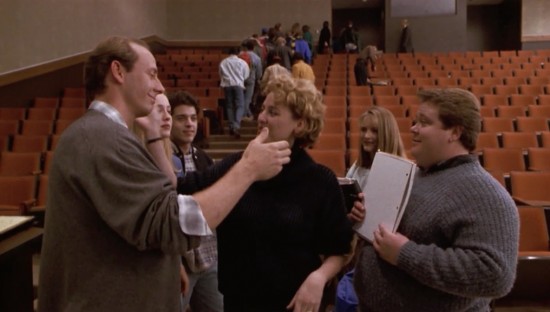Candyman

According to horror exegetes, Bernard Rose’s Candyman is a parable about race, class, and gender in America: Helen (Virginia Madsen), a grad student studying urban legends, is punished because she’s a woman who intrudes upon a male realm (academe), and/or a middle-class Caucasian who intrudes upon an underclass African-American realm (Chicago’s Cabrini-Green project). Such readings miss the point!
Instead, Candyman ought to be read as a mashup of Sidney Hayers’s 1962 horror movie Burn Witch Burn, in which a Psychology professor who explains away witchcraft as superstition is tormented by what might be witchcraft, and (in a first-time-as-farce, second-time-as-tragedy way) Frederick Crews’s 1963 parody The Pooh Perplex, a collection of exegetical essays — by fictitious Marxist, Freudian, Christian, Leavisite, and Fiedlerian literary critics — on the topic of Winnie-the-Pooh.
The uneasy embrace, in the early scene shown here, between Helen and her husband, a Sociology professor who explains away urban legends as superstructural phenomena, foreshadows the uncanny, Todorovian “fantastique”-type state into which Helen and we will be drawn; like Rose’s earlier movie Paperhouse, this one teeters between realist and supernatural modes. Candyman is a parable about interpretation; its unmentionable boogeyman is hermeneutic vertigo.
PS: Virginia Madsen’s character in this movie must have been the inspiration for Gillian Anderson’s Dana Scully in The X-Files. Her hairdo, her sardonic smile! Who’s with me?
PPS: Below, blackboard scenes from Candyman and Burn Witch Burn.



